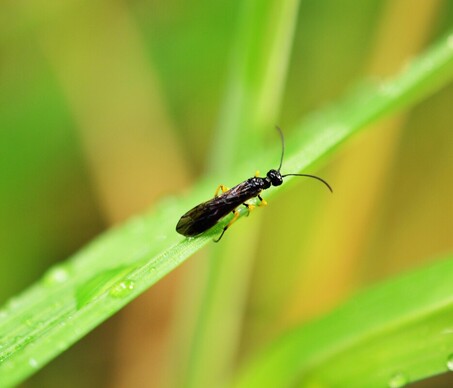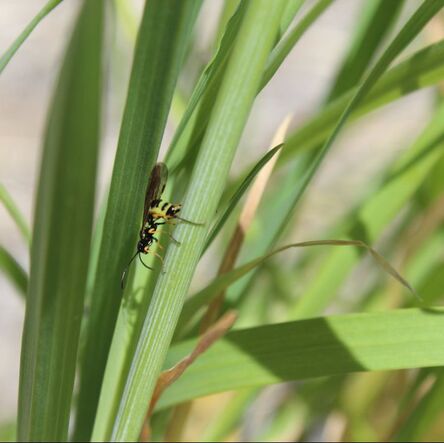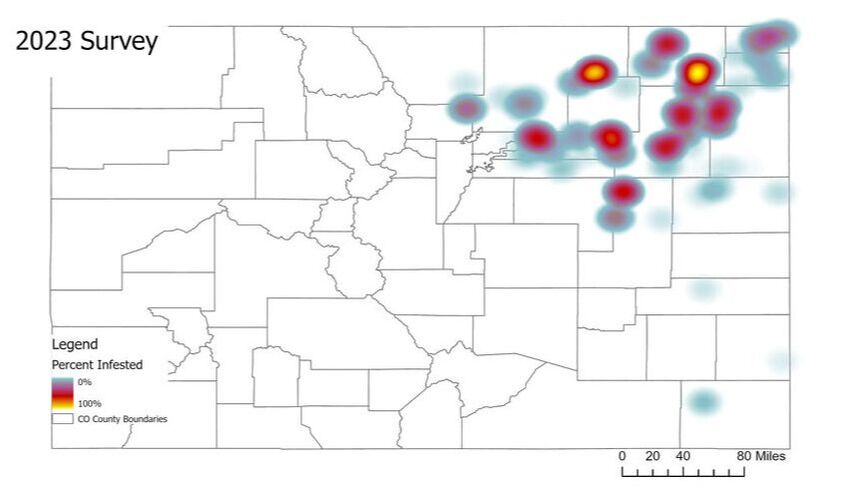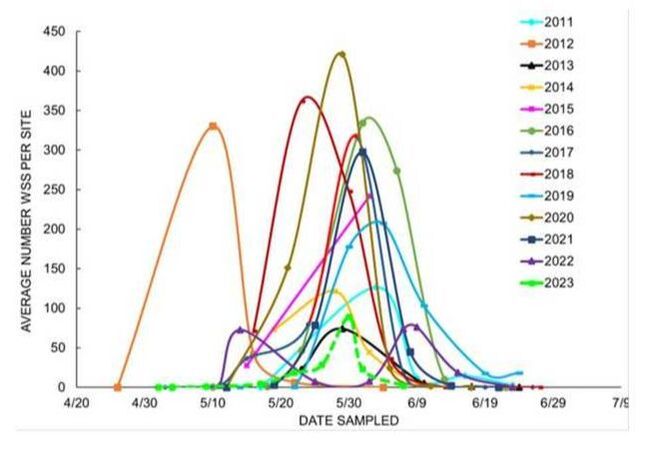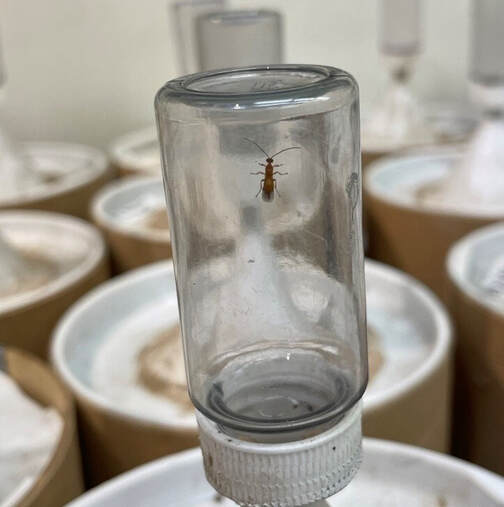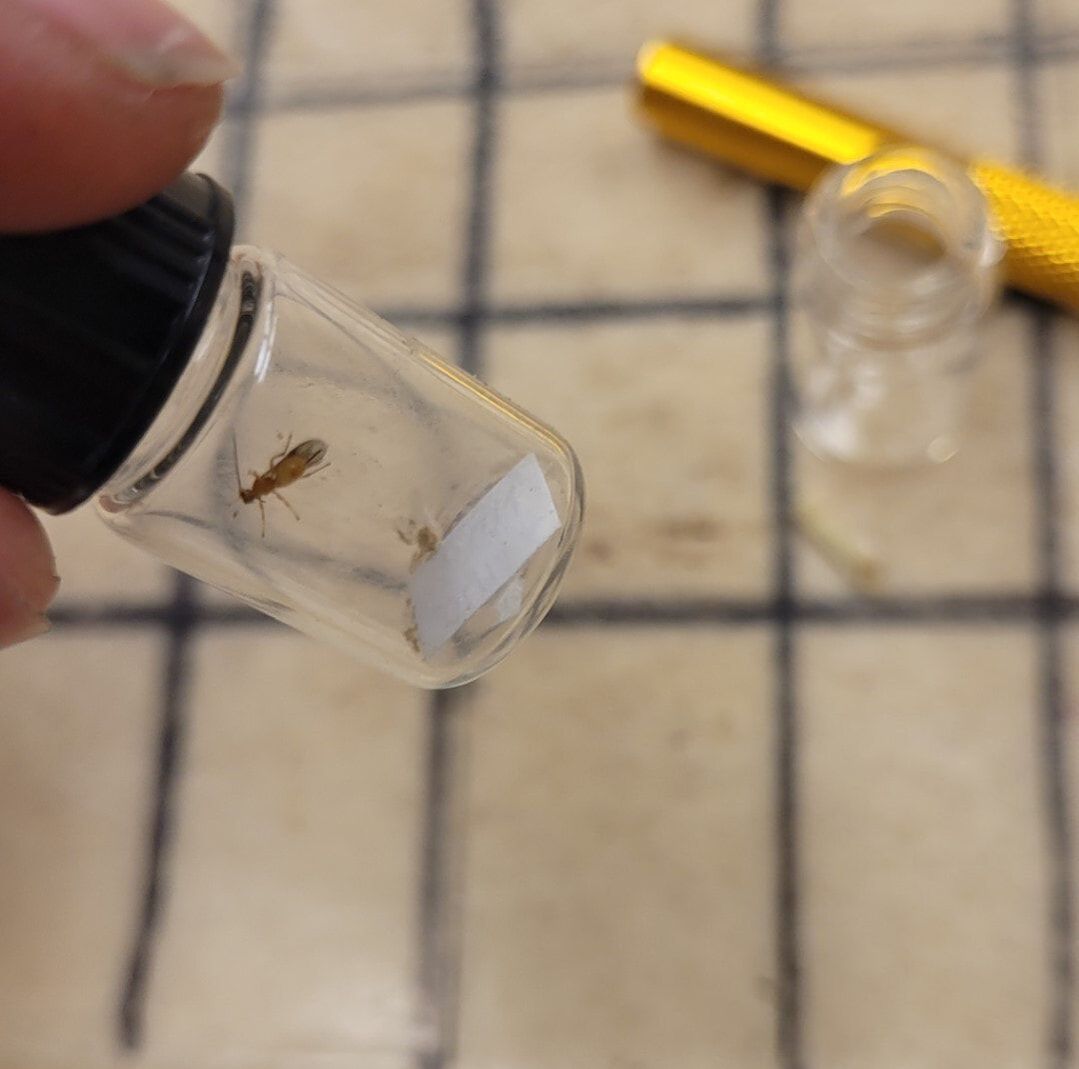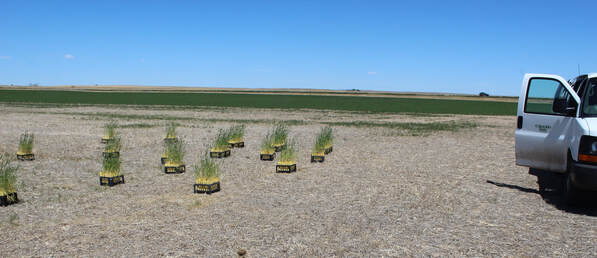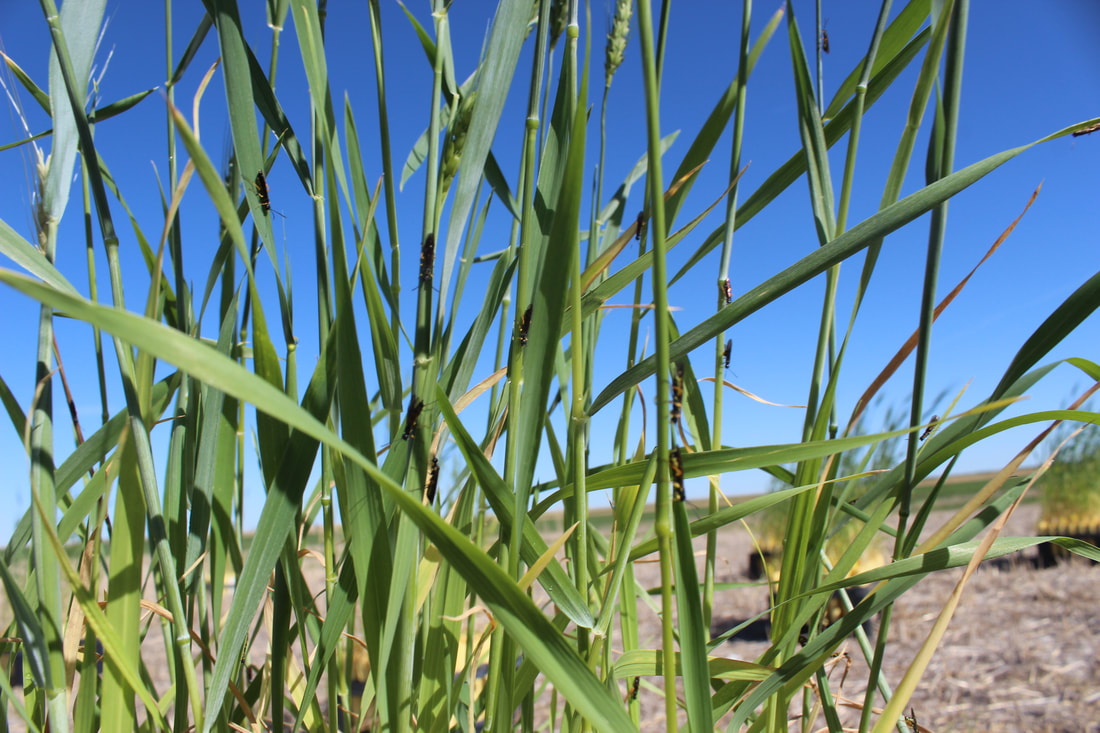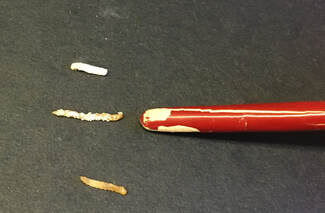Our Research
|
Our lab primarily studies the wheat stem sawfly (Cephus cinctus Norton), which causes extensive damage to wheat crops in Colorado and the northern Great Plains region. Adult sawflies lay their eggs within wheat stems. The resulting larvae feed on the plants from the inside. This leads to reductions in wheat head size and frequent stem cutting, therefore resulting in yield losses for farmers.
We work alongside wheat breeding specialists, industry experts, and Colorado growers to pursue methods for minimizing the damages this pest causes. This website will be periodically updated to reflect our current research projects. To learn more about this pest, see our fact sheet below:
| |||||||
Annual Wheat Stem Sawfly Survey
Each year, our lab surveys 15+ Colorado counties for sawfly infestation. This data is then used to monitor sawfly movement, provide a database for use in future projects, and much more! See the image below for our most recent survey results.
|
This graphic can be downloaded here:
|
| ||||||
|
Previous year's maps are also available and can be downloaded here:
|
Wheat Stem Sawfly Flight Timing
We conduct sweeps each season to track the timing of when adult sawflies emerge and target wheat crops. The resulting data helps us predict future flight timelines as well as guide precision insecticide applications.
Solid Stem Assessment Screening
Breeding wheat to have fully solid or semi-solid stems remains one of the major control measures for mitigating sawfly damage. Changing the stem solidness in this way makes it more difficult for sawflies to lay their eggs within them. Solid and semi-solid stems are also less suitable for their larvae to develop in, as apposed to hollow stems.
We cooperate with Dr. Esten Mason of the CSU Wheat Breeding and Genetics Program to help further this line of research. We perform dissections and record stem solidness for a variety of experimental wheat lines. This data is then utilized to predict a line's resiliency to sawfly infestation, determine how environmental conditions impact solid stem gene expression, and more.
We cooperate with Dr. Esten Mason of the CSU Wheat Breeding and Genetics Program to help further this line of research. We perform dissections and record stem solidness for a variety of experimental wheat lines. This data is then utilized to predict a line's resiliency to sawfly infestation, determine how environmental conditions impact solid stem gene expression, and more.
Parasitoid Wasp Studies
|
Parasitoid wasps are a potential natural control measure for wheat stem sawflies, as the adult wasps will seek out sawfly larvae in wheat stems. After paralyzing a sawfly larva, these wasps will then lay their own egg inside the stem. Resulting offspring will then consume the sawfly larva, killing it before it has the chance to become an adult.
Colorado currently has populations of two types of parasitoid wasps know to target wheat stem sawflies, Bracon cephi and Bracon lissogaster. Although both have very low populations in Colorado, Bracon cephi appears to be more abundant of the two, which is why our studies focus more on that particular species. Even though these wasps are an effective control measure for sawflies in other states, they have yet to cause a significant decrease in sawfly infestation in Colorado. We conduct a variety of field and lab studies with these wasps, including field releases and genetic studies. We are currently investigating the evolutionary compatibility of parasitoid wasps and sawflies from differing parts of the country in search for an explanation as to why these wasps have yet to become an effective control measure in Colorado. |
Ancestral Wheat Screening
Over the course of several field seasons, we have searched for novel sources of resistance to sawflies in species of ancestral wheatgrass. Breeding programs are then utilized to incorporate these resistances into commercially viable lines of wheat. We test for sawfly infestation rates in these new lines by deliberately exposing them to adult sawflies in the field. By evaluating the larval survivorship within the stems after exposer, we can help determine whether resistance has been achieved. We partner with the Wheat Genetics Resource Center at Kansas State University on this project.
Evaluating Use of Fusarium spp. Fungi in Sawfly Control
|
We are planning to evaluate the ability of Fusarium spp. fungi discovered in Colorado wheat samples to cause sawfly larvae mortality. Greenhouse assays will be used to expose sawfly-infested wheat to the fungi. After exposure, dissections will be used to determine larval survivorship.
Project status pending. |
Non-Preference Wheat Cultivars
We are investigating anecdotal reports of herbicide-resistant Clearfield® wheat lines proving less attractive to sawfly adults over other types of winter wheat. Field trials are planned for this upcoming field season, where stem dissections will be used to count sawfly eggs and larvae. Infestation rates will then be compared to see if a non-preference is supported.
Crop Rotation Impact on Sawflies
We have field experiments planned to evaluate the impacts of differing crop rotation treatments on sawfly infestation and wheat damage. We will also be collecting various soil attribute and erosion data. This survey will be performed in partnership with the Colorado Wheat Research Foundation.
Degree Day Model for Predicting Sawfly Emergence
Our Ph.D student Henrique Vieira will be undertaking this initiative. CoAgMet weather data from New Raymer, Colorado will be used in tandem with historical sawfly infestation to help growers predict future sawfly flights.
